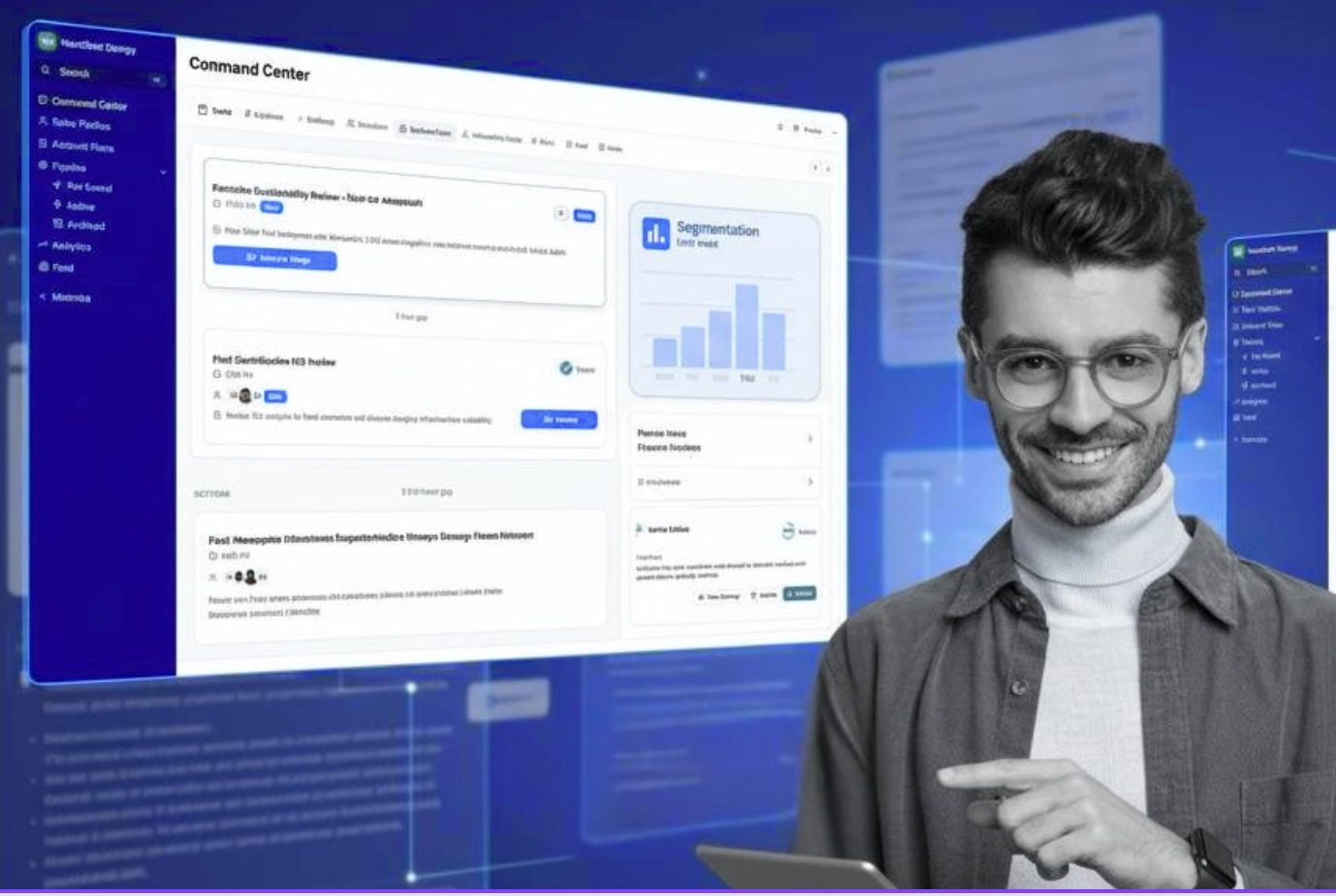Your GTM Strategy Is Probably Targeting the Wrong Accounts (Here's How AI Changes That)
Why spray-and-pray is dead and how AI-powered precision targeting is rewriting the B2B playbook
Estee Woods
VP of Marketing

Last month, I sat across from a VP of Sales who looked exhausted.
"We hit 147% of our activity goals last quarter," he said, rubbing his temples. "But only 72% of our revenue target."
Sound familiar?
His team wasn't lazy. They weren't bad at their jobs. They were just playing a numbers game in a world that rewards precision.
The Uncomfortable Truth About Modern B2B Sales
Here's what keeps revenue leaders up at night: Your buyers are getting smarter faster than your sales process is evolving.
Think about your own buying behavior. When was the last time you picked up the phone because a sales rep sent you a clever email? Exactly.
Research shows B2B buyers are already 57% through their purchase journey before they'll even talk to sales. They've read reviews, compared features, discussed options with their team, and probably created a shortlist—all without you knowing they exist.
Meanwhile, most sales teams are still spray-and-pray prospecting like it's 2010.
What If You Could Read Minds? (Sort Of)
Imagine knowing:
- Which accounts are actively researching solutions like yours right now
- When a prospect shifts from "just browsing" to "we need to solve this problem"
- Whether they need a consultative enterprise sale or prefer to self-serve
- The exact moment they're most likely to respond to outreach
This isn't science fiction. It's what happens when AI analyzes thousands of subtle signals humans miss.
How One Company 3X'd Their Pipeline Velocity
Let me tell you about Sarah, a CMO at a fast-growing SaaS company. Her marketing team was generating plenty of leads, but sales complained they were mostly tire-kickers.
"We were treating all accounts equally," Sarah explained. "Sending the same sequences, using the same playbooks, hoping something would stick."
Then they implemented what they call "Precision GTM"—using AI to orchestrate their entire go-to-market motion.
The AI analyzed patterns across:
- Hiring data (are they scaling teams that typically need your solution?)
- Technology changes (did they just implement complementary tools?)
- Digital footprints (what content are they consuming?)
- Competitive movements (are they evaluating your competitors?)
- Budget signals (funding rounds, expansion announcements)
But here's the crucial part: It didn't just score leads. It prescribed actions.
For high-intent enterprise accounts: Deploy the full consultative sales motion with executive engagement.
For product-qualified leads: Route to self-serve with targeted in-app guidance.
For ecosystem opportunities: Engage through channel partners who already have relationships.
The results?
- Pipeline velocity increased by 52%
- Customer acquisition costs dropped by 38%
- Sales hit 118% of quota (up from that painful 72%)
The Three Phases of Precision GTM
Phase 1: Get Everyone on the Same Page (Harder Than It Sounds)
Before touching any technology, successful companies align on fundamentals:
- What actually makes an account "qualified" for us?
- Which metrics truly predict revenue?
- How do we balance automation with human judgment?
Pro tip: If your sales and marketing teams can't agree on what a good account looks like, AI won't magically solve that problem.
Phase 2: Build Your Intelligence Engine
This isn't about buying another tool and hoping for the best. It's about creating a system that:
- Integrates your scattered data (CRM, marketing automation, intent platforms)
- Analyzes patterns in real-time
- Learns from wins and losses
- Delivers actionable insights, not just scores
The best implementations we've seen involve weekly standups between sales, marketing, and ops to refine the model based on frontline feedback.
Phase 3: Turn Insights Into Action
Here's where most companies stumble. They get great insights but don't change their behavior.
Winning teams create specific plays for different scenarios:
- Hot account detected: Personalized executive outreach within 24 hours
- Competitor evaluation identified: Deploy comparison content and customer proof points
- Expansion signal noticed: Customer success leads with value realization data
Each play has an owner, a timeline, and success metrics.
The Metrics That Actually Matter Now
Forget MQLs and activity metrics. Precision GTM teams track:
Account Engagement Depth: Are we reaching multiple stakeholders at target accounts?
Motion-to-Outcome Conversion: When we deploy a specific play, how often does it work?
Revenue per Dollar Invested: What's our actual return on GTM spend?
Time to Productive Conversation: How quickly do we get to meaningful dialogue?
The north star? Pipeline velocity. Because when you're targeting the right accounts at the right time with the right approach, deals move faster.
The Clock Is Ticking
Here's the thing about transformative technologies—they create temporary competitive advantages.
Companies implementing Precision GTM today aren't just optimizing their current process. They're building proprietary datasets, training AI models on their unique market dynamics, and developing organizational muscles their competitors can't quickly copy.
In 18 months, AI-driven account selection will be table stakes. The question is: Will you be teaching others how to do it, or playing catch-up?
Where to Start Tomorrow
Audit your current account selection process. How many of your "best fit" accounts actually convert? Why?
Map your buyer journey signals. What observable behaviors indicate genuine buying intent in your market?
Pick one motion to optimize. Don't boil the ocean. Choose your highest-value sales play and instrument it properly.
Measure what matters. Track pipeline velocity and revenue efficiency, not just activity.
The companies winning tomorrow's revenue game won't be the ones with the most salespeople or the biggest marketing budgets. They'll be the ones who know exactly where to focus their firepower—and when to pull the trigger.
Want to explore how Precision GTM could transform your revenue engine? [Let's talk about your specific challenges.]
About the Author
Estee Woods is VP of Marketing at ShiftUP, where she's helping B2B companies reimagine what's possible when AI and human creativity converge. She's passionate about making complex technology accessible and proving that B2B marketing doesn't have to be boring.


